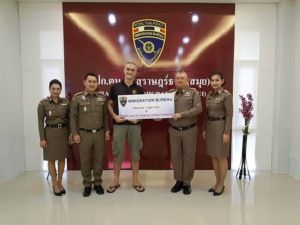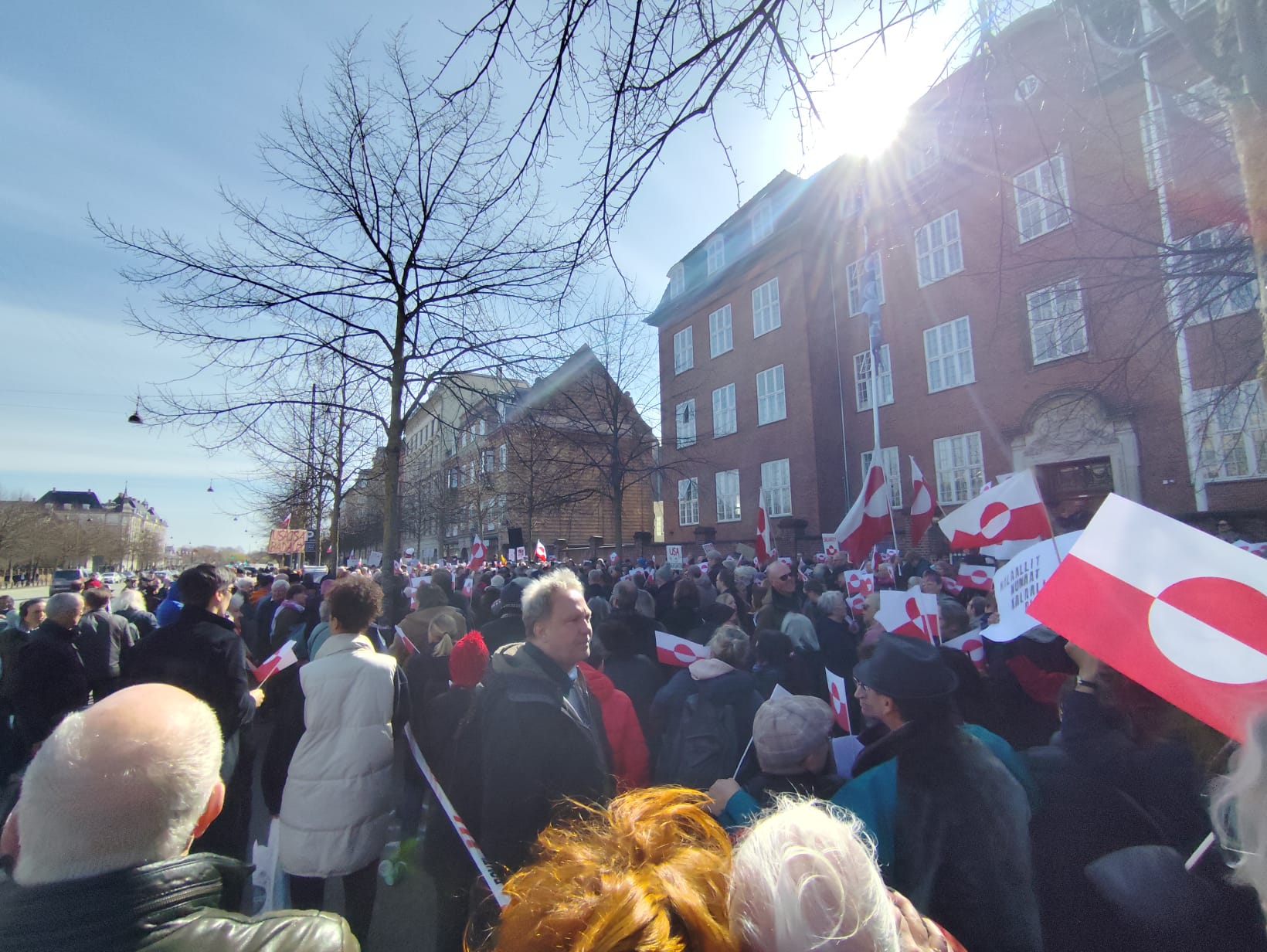In late June last year a dozen Thai soccer teammates and their assistant coach found themselves trapped inside the Tham Luang cave when heavy rainfall unexpectedly flooded the entrance.
Danish-born Ivan Karadzic, a professional scuba diver who has lived in Thailand for the last 12 years, immediately volunteered to help.
Karadzic was an integral part of the courageous rescue effort covered by media worldwide that saw all 13 ‘Wild Boars’ saved from the flooded cave. As well as being chosen as CPH POST’s ‘Dane of the Year’, Karadzic also spoke to the paper.
Could you tell me a little about yourself?
I am 45 years old and was born and raised in Vedbæk. In 2006 I was invited to a friend’s wedding in Thailand, which was my first time outside of Europe. I took my first diving course on that vacation, and after that, I knew I’d be back.
I sold my apartment, returned to Thailand and became a diving instructor. In 2012 I opened my own diving centre, Koh Tao Tec Divers. It’s on a small island renowned for being a ‘diving mecca’, so it’s quite popular.
What do you love about diving?
I like to explore. The unknown fascinates me. Scuba diving offers you an opportunity to see the most spectacular things. There’s still so much we don’t know about the ocean. Knowing it’s unlikely I’ll walk on the moon or Mars, the ocean is my frontier.
How did you get involved in the cave rescue?
As well as running the diving centre I’m also a member of an organisation called Koh Tao Rescue, which serves as a private ambulance service to deal with emergencies on the island. I’m in charge of the diving department.
The authorities had been alerted that something was wrong on the evening of June 23, when the boys and their assistant coach didn’t come home after practice. Knowing that the team regularly went to the Tham Luang cave, it was one of the first places checked. Their bicycles were found by the cave entrance, which was completely flooded.
The next day, a fellow instructor and I learned about the situation and offered our services to help in any way possible. There are approximately 30 cave divers in Thailand, and we all know each other.
It was soon clear that professional divers were needed, and we ended up being around 10-15 volunteers joining 90 Royal Thai Navy SEALs and four divers from the UK with extensive cave rescue experience.
I’d never dived in this cave before, and to the best of my knowledge no-one else has, as it’s only filled with water during the monsoon season. The water becomes mud and there are strong currents that not only make it impossible to see underwater, but also very difficult to navigate in.
The boys were in the ninth chamber of the cave, which is about halfway. They’d been in there for nine days until they were found on July 2. In that time all they had to eat was half a packet of toast bread. The coach taught the boys how to drink filtered water from the walls of the cave, which doctors reckon helped save their lives.
Discovering that the boys and their coach were alive was just the tip of the iceberg. An air analyser revealed that there was only 15 percent oxygen in the area where the boys were stuck. When the oxygen level hits 12 percent, people usually slip into unconsciousness, and at 10 percent, you die.
We were working against the clock. Drilling from the surface over the cave with heavy machinery was considered, but quickly abandoned because the boys were around 700 metres down. Meanwhile, around 22 huge water pumps were installed to suck out as much water as possible while we planned the rescue.
One of the divers delivered three tanks of air to the boys on July 6 to help buy time, but tragically didn’t make it out of the cave alive. That’s when the true danger of this mission became apparent.
What was your role in the rescue?
The boys were 4.5 kilometres in, which is not reachable for a diver on one set of equipment. We acted as a support group, creating a ‘pit stop’ about 2.5 kilometres inside the cave, where we kept fresh tanks, extra equipment, food and medicine. We swam back and forth into this sixth chamber with an extra supply of tanks every day until July 7.
How was the extraction planned?
The boys, some as young as 11 years old, were obviously not divers. We were afraid that they would panic at some point during the rescue. A doctor decided the safest way to rescue the boys would be by anaesthetising them. Because they were unconscious throughout the operation, they did not panic or have any traumatic recollections.
However, when you’re unconscious you’re not capable of keeping the regulator in your mouth, as you have to bite down. Full-face masks were needed, but finding some that would fit the young boys proved difficult.
How much gear did you have to wear?
A wet suit, a diving mask, a helmet with lights installed on them, gloves, scuba fins, a buoyancy compensator, side-mounted tanks because of the narrowness of the cave, regulators, tracking coils, three navigation devices – and knives in case I got caught somewhere.
Every time we’d go in, we carried a total of five tanks: two for ourselves and another three for the team. The entire outfit weighed around 40 kilos on land, but it’s weightless underwater.
How did you feel throughout the mission?
Despite the difficult conditions in the cave, the only times I felt distressed were the days before the boys were found, wondering whether this would be a rescue or recovery mission.
July 8 was my last day in the cave, but it was a long day; we met in the morning for briefing and weren’t done until 2 am. We also retrieved the first four children. I woke up the next day and I was completely knackered! Dizzy, sweating profusely and my entire body ached. Nevertheless, knowing the job wasn’t done until all 13 members of the football team were rescued, I still got in a cab and headed toward Tham Luang. Another four boys were rescued on July 9. Although I felt ready again on July 10, the doctor wouldn’t allow me back into the water. But through the great efforts of the other divers, the remaining four boys and the coach were rescued that day.
What happened after everyone had made it out safely?
I left Tham Luang around noon and arrived in Bangkok on July 10. I was greeted by the king of Thailand’s personal servant at the airport. The assistant thanked me on behalf of King Rama X and the people of Thailand and presented me with a gift.
After that, one of the airport employees asked me where I was going, assuming I was headed back to Europe like most of the other divers. When I told her that I actually lived in Thailand and that I’d be going to Chumphon Airport, she abruptly walked away only to return moments later with a plane ticket “on the house”.
When I landed in Chumphon, there were airport employees waiting for me and I was given total VIP treatment! But they insisted I stay for another night to celebrate. They’d checked me into a decent hotel in the city and I ended up taking the ferry home to Koh Tao with a severe hangover the next morning.

The Governor of Suratthani contacted me and offered me a free renewal of my residence permit in Thailand – a gesture I very much appreciated.
The government held a huge event on October 6 to commemorate the actions of those involved in the rescue, which meant approximately 7,000 people were invited: divers, engineers, soldiers, doctors, and volunteers. The prime minister of Thailand was there. Notable celebrities and musicians performed all night. And sitting at the next table were the 12 boys. It was great to meet them all.
What did you find most difficult about the mission?
We knew the risks, but we all felt a shared responsibility in getting the boys out. The hardest thing was that the families were always there – in a building close to the cave. After a bathroom break, I walked out in full scuba gear and the parents of three of the boys came up to me, thanking me for rescuing their children. This was on July 3, and although we hadn’t been able to bring anyone out yet, the father of one the boys gave me a gift: a traditional sarong. That was quite difficult, and I shut my feelings off, knowing I had to stay completely focused.
Has the rescue changed you in any way?
I feel branded, but in a positive way. It has been an amazing opportunity to work with such dedicated people, who were willing to risk their own lives to save others. I feel honoured to have been part of the rescue.
















